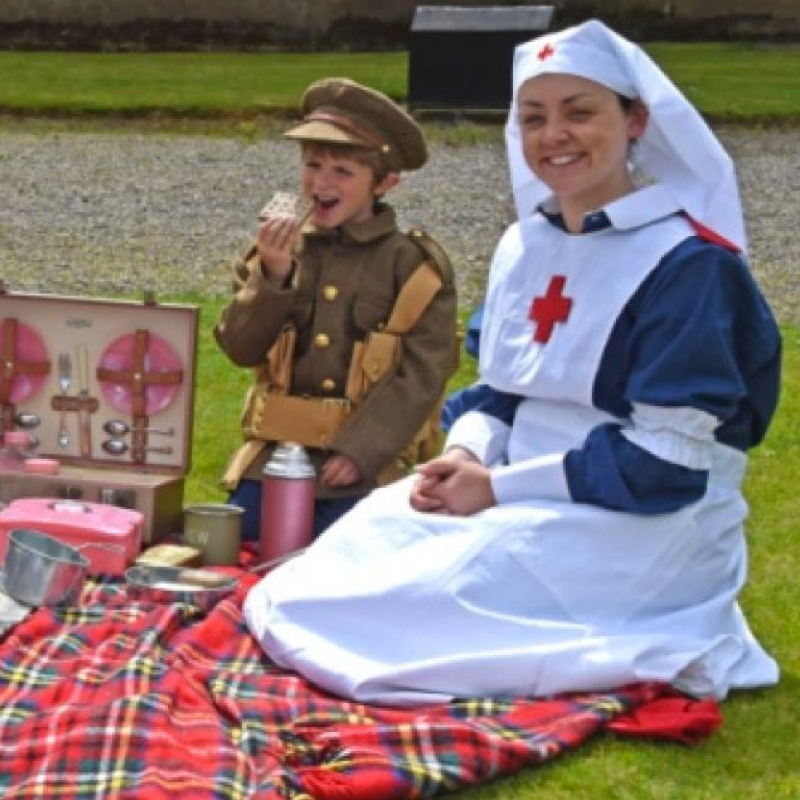Plan your own Project

There are two main elements of commemoration that are useful to think about for best practice purposes.
Firstly, there should be an educational element where participants are invited to learn about what is being commemorated and its impact on who they are as a member of society. This emphasis on education provides an opportunity to confront the past and learn about it in all of its complexity.
Secondly, that there is a physical or virtual space created for celebration, remembering, and honouring shown in the form of symbolic exchange, gift-giving, storytelling or marking a location to honour or show respect. This creation of space has therapeutic potential, allowing those who have been affected to have space set aside which is dedicated to their experience. More specifically, when planning your own event or project, it can help to consider the following questions:
Start from the historical facts – you will need good information sources;
Recognise the implications and consequences of what happened – this often means going beyond a single event, and considering the decade as a whole;
Understand that different perceptions and interpretations exist – this means ensuring that there is space for discussion and exchange of perceptions and understandings, and
Show how events and activities can deepen understanding of the period
Remembering in Context
Remembering the Whole Decade
Remembering the Future
Remembering Ethically
Remembering Together
There are a number of reasons: to foster greater awareness, form a shared understanding of perceptions, learning, develop a shared sense of ownership, relationship building, or to create a product such as a booklet, film, play, online resource, creative artwork. If you are clear about why you are doing it and what outcomes you want to achieve, you can build the project or event around achieving those goals.
This would be a good way of getting a different perspective into the event. It can be useful to find out what else is being provided in your area, or around the theme you are interested in exploring and to find ways to complement each other’s efforts rather than duplicate.
Although you may wish to remember the decade as a whole, given how interconnected the various events were, you may wish to pinpoint a particular event or story as a starting point. If so, finding a local connection or individual story can help people to engage.
If the event or project aims to produce something tangible (e.g. a work of art, a website) who will own the product once the project has finished?
Is the event just for your group, for the wider community, for people from other communities, for local people, councillors, MLAs, schools, young people, older people, women, ethnic minorities, or for as wide an audience as possible? Once you have answered this question, you can consider how best to target and attract your desired participants. Also, asking representatives of your target group to help with the planning of the event or project is often a good way to get them involved, since doing this maximises your chances of meeting their needs and their participation.
Do you need a speaker, a facilitator or chair, someone with an interesting family story, an expert, or someone from an organisation with a particular interest in the focus of your event? How far ahead do you need to book them? For some speakers and facilitators there is likely to be a fee, and for others, you may at the very least need to cover travel expenses.
Venue: is the event or project located in a neutral venue? Some events or projects by their very nature are not in neutral venues – but if this is the case, how will you ensure that people who may not normally attend that venue feel comfortable to attend? Can you hold events in a number of venues so that people from all backgrounds feel able to attend in at least one location?
Disability access: it is essential to ensure that your venue has disability access, and that provision is made (and advertised) to enable a range of requirements to be met. For example, will you provide a loop system?
Timing: think about and ask what times are most likely to work for your target group. For people who are working, daytime events during the week are difficult, whereas evenings can be better. However, evenings can be difficult for example for parents of young children, and winter evenings can be off-putting for some older people having to travel to an unfamiliar venue at night and in poor weather.
Ease of understanding: consider your target group, and what exposure they have had to date with the Decade of Anniversaries. If you are targeting a wide range of participants, or your event is open to the public, ensure that your content and delivery is right for them.
Language and languages: are you promoting your project as a celebration or as a commemoration? Using the term “marking anniversaries” or “commemoration” can sound more inclusive or appropriate than the term “celebration”. If you are hoping to engage people from ethnic minority backgrounds, or people from migrant communities, what are their language requirements and how can you meet them – will you provide an interpreter or materials in their language?
Refreshments: if you are providing refreshments, consider people’s dietary needs and how you can cater for them.
The challenge is to ensure that your event or project is a positive learning experience, exploration or exchange of views, which is challenging but not threatening. You could use one or more of the following formats:
Illustrated lectures or panel discussion with time for questions and reflection afterwards
Workshop methods which allow people to participate in group exercises and explore issues together. You can provide materials and props such as WWI propaganda, uniforms, and memorabilia which people can get their hands on and discuss responses.
Creative activities such as the creation of a play, film, music, a work of art, a digital production.
Use of plays, films, audio or visual footage, or art as a starting point and springboard for discussion.
A roundtable approach for large group events such as Café Culture.
Academic exploration and discussion such as the Hedge Schools format.
Use of digital media both for creation of resources, as a means of expression, and for research and exploration.
Use of local and human stories to illuminate the bigger picture.
Incorporating learning and exploration with entertainment and enjoyment – when appropriate - such as the use of dramatisations and films to engage participants.
Site visits such as trips to museums, cemeteries, local trails, memorials, and historic houses where participants can come into direct contact with significant areas and use this as a basis for exploration and discussion.
Offering a course geared towards increasing people’s knowledge and capacity to engage productively with the issues.
This toolkit offers a range of methods used by groups and organisations to explore the Decade of Anniversaries. When you are considering which methods to use or adapt, or indeed if you are creating your own methods, it’s best to use an approach that is suited to your target group, the number of participants, and the level of knowledge or confidence your participants might have to engage. Smaller group size tends to allow for more in-depth exploration and shared reflection, and it is easier to work with small groups to produce creative works, while larger group size usually means the focus is more on presenting information, with less in-depth engagement.
While this is not an exhaustive list, typical costs can include:
Venue
Refreshments
Materials: producing, printing, copying
Creative arts and crafts materials
Speakers
Transport or travel expenses
Digital equipment and recording equipment (if appropriate)
Fees for online membership of websites or archives
Publicity / tickets (even if the event is free, you still need to promote it)
Tutors / facilitators / lecturers
Musicians / artists / actors •Costumes / props
Public liability insurance
You may wish to apply for funding, ask for sponsorship, ask for fee-free or voluntary input, ask for a venue or printing / copying to be provided free of charge. Whether you use one source of funding or many, make sure that all costs are covered and that your group is not left with a burden of unforeseen costs.
Will you ask people to complete evaluation forms, or can you use more creative ways of getting feedback, using comment boards, post-it comments etc.? And how will you ensure that you use the feedback to help plan your next activity?
Ensure that your record keeping is entirely in line with what funders / sponsors will ask for, and with legal requirements and best practice. This means at the very least keeping all receipts and invoices, and a record of when, why and how payments were made or received.


